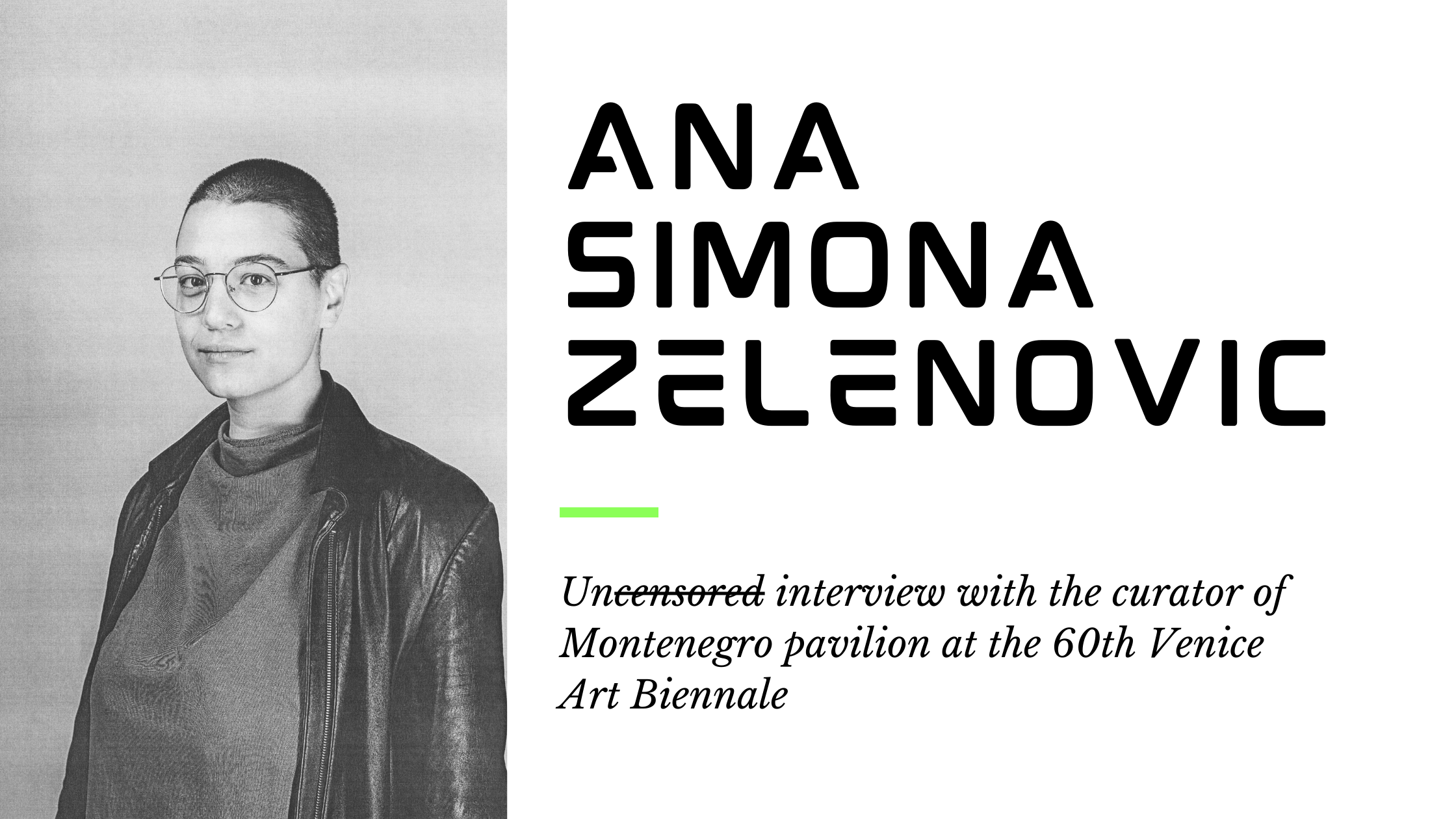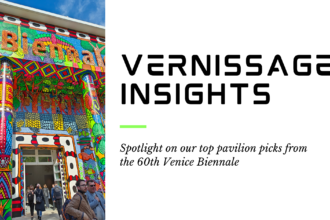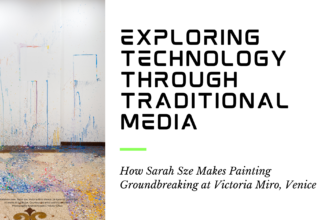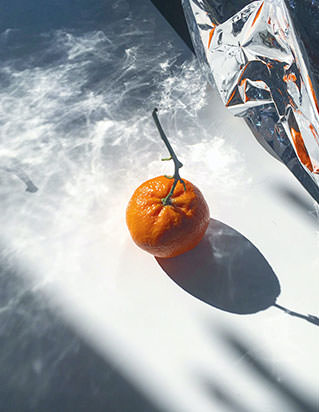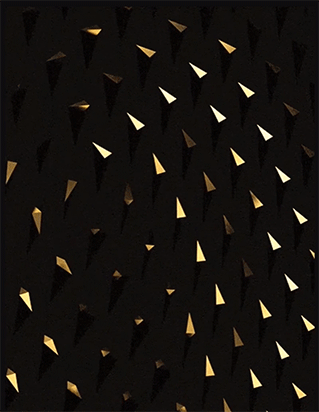Between Commodity and Legacy: Ana Simona Zelenović on ‘It Takes an Island to Feel This Good’
Prior to the highly-anticipated 60th Venice Art Biennale, I had an exclusive opportunity to participate in a sincere and stimulating dialogue with Ana Simona Zelenović – curator of Montenegro Pavilion. Our exchange focused on exploring the intricate themes present within her latest exhibition titled “It Takes an Island To Feel This Good”, which effectively blends together history, memory and current societal concerns.
In this unfiltered interview, Ana Simona delves deep into her creative process, exposing how she tackles the controversial and challenging realms of art and history. Additionally, we examine Darja Bajagić’s noteworthy achievements as an artist who seamlessly blends historical facts with artistic vision in a distinctive manner. Her work boldly integrates historical evidence and artistic vision, compelling viewers to re-examine their understanding of the past… and the present.
Throughout our discussion, we delved into an array of stimulating subjects. These included the paradoxical implementation of a lavish resort’s catchphrase as the exhibition’s heading, navigating obstacles and advantages that come with archival materials, and exploring how present-day beliefs interact with past atrocities. Ana Simona added valuable insights to these multifaceted themes which promise to make for captivating content within Biennale.
– Milica Grujić, April 2024.
The title ‘It Takes an Island to Feel This Good’ is deeply evocative. Could you share how this title reflects the overarching concept of the exhibition?
It is deeply ironic. We took it as ready-made, it is a slogan on the website of a new luxury resort built on Mamula Island. I thought it illustrates how perverse our desire for commodities is, it spreads to an island, at the cost of memory. The exhibition concept revolves around the questions of collective memory, playing with us and disturbing us with its ambiguity and sharpness at the same time. The title only emphasizes human and capitalist nature in the context of these issues.
In your text, you mention Darja Bajagić’s approach to integrating historical evidence into artistic visions. How do you think this approach impacts the viewer’s understanding of history and memory?
I am glad you asked this. History is a product, a narrative, and a choice, but Bajajgić’s approach reminds us all of our role and our responsibility in it. Understanding and “consuming” history takes time, research, memory, criticism, and emotions, and it takes attentiveness and dedication to deal with history and memory as well. She reminds us to be cautious with its interpretations and use. She puts it in our face that history and memory are not (only) the products, but they call for our engagement, will, and strength to look at them and dedicate ourselves to them. One thing Bajagić says between the lines is that memory and history are hard to look at, cause they require looking at ourselves as well.
Remembering and learning history is part of resistance, to narratives, to damnatio memoriae, and all other forms of current political oppression.
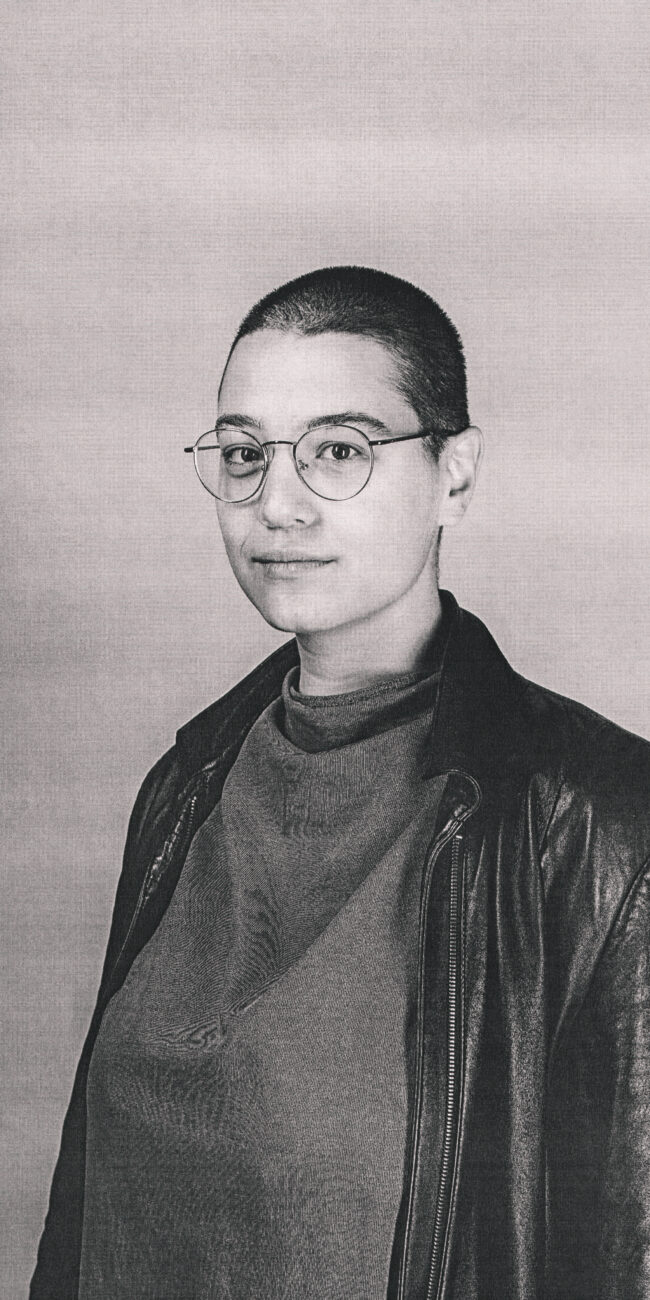
Ana Simona Zelenović | Photo: Marijana Janković
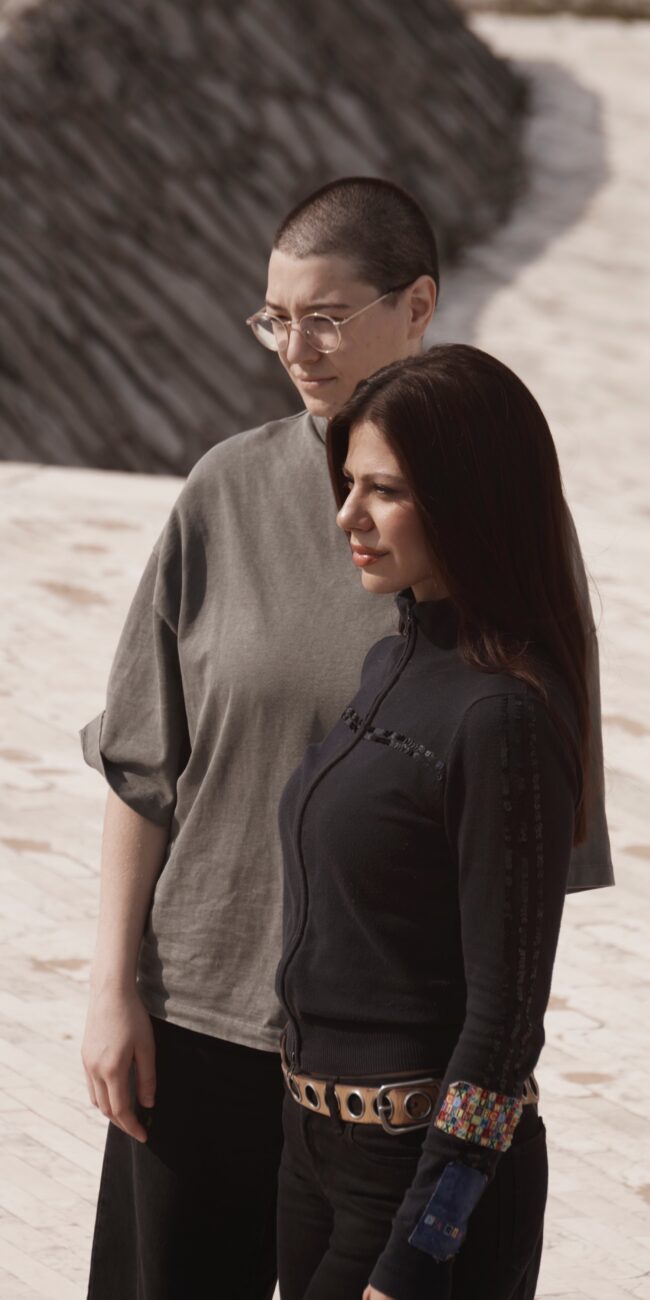
Darja Bajagić | Photo: Geray Mena
The exhibition prominently features archival materials. What challenges and opportunities did these materials present in curating this exhibition?
She got photocopies from documents and xeroxes, not the chance to scan photographs themselves. Xeroxes are featured sometimes as enlarged prints of scans, almost to the state of not being recognizable, or sometimes turned to the negative of these photos, in all cases printed by UV print on painted canvas. She plays with representation and meaning constantly in her practice, and this exhibition is no exception. Opportunities would be maybe to change the attitude towards the image, or at least to call it into question, which we already have the manner of doing. As Ingrid Luquet-Gad said in her essay for the show, “Namely, the archival image also demands to be read amidst the current tendency for abstraction to be perceived as a marker of truth, at the same time as transparency, conversely, is now being cast under the suspicion of turning oppressive.” So the artist again engages the audience to be skeptical, even if at the same time, looking at these paintings, they feel something in their guts. So to question yourself, the very act of representation, its intention and implications, and the evidence itself, all in all, to question the “Truth” is what we hope to learn from this use of “archival image”.
Your text highlights the connection between past atrocities and contemporary attitudes. How do you see this interplay influencing the audience’s perception of the exhibit?
Since all these big exhibitions are part of a curated political agenda, I see this exhibition as a possibility to subtly raise questions without pointing fingers at anyone in particular. To have this show concerning a fascist ex-concentration camp, and to have as a director of Biennale the former leader of the youth wing of the neo-fascist Italian Social Movement party (a party established by Giorgio Almirante, who was a minister in the fascist dictator Benito Mussolini’s government), says a lot about how the art world functions. The topic of Biennale Strangers Everywhere is also in contrast to the rise of fascism in Italian politics. Either fascism learned to tolerate differences to get power, or the art world doesn’t give a f*ck as long as it’s selling. We all accepted we are hypocrites. We can use these big shows to subvert the values of the art world (but still kind of support it), or we can as a statement not take part in it. And audience will perceive whatever they came for, if they already care about ending war atrocities they will see the link the exhibition has with today, and if not I don’t believe it will make them think. Bajagić has sharp criticism of society but her art requires the ability to read layers, get the irony, and have self-refection. How much the audience cares for that, and do they come to Biennale to change opinions, I cannot say.

Zelenović & Bajagić | Photo: Geray Mena
To have this show concerning a fascist ex-concentration camp, and to have as a director of Biennale the former leader of the youth wing of the neo-fascist Italian Social Movement party (a party established by Giorgio Almirante, who was a minister in the fascist dictator Benito Mussolini’s government), says a lot about how the art world functions.
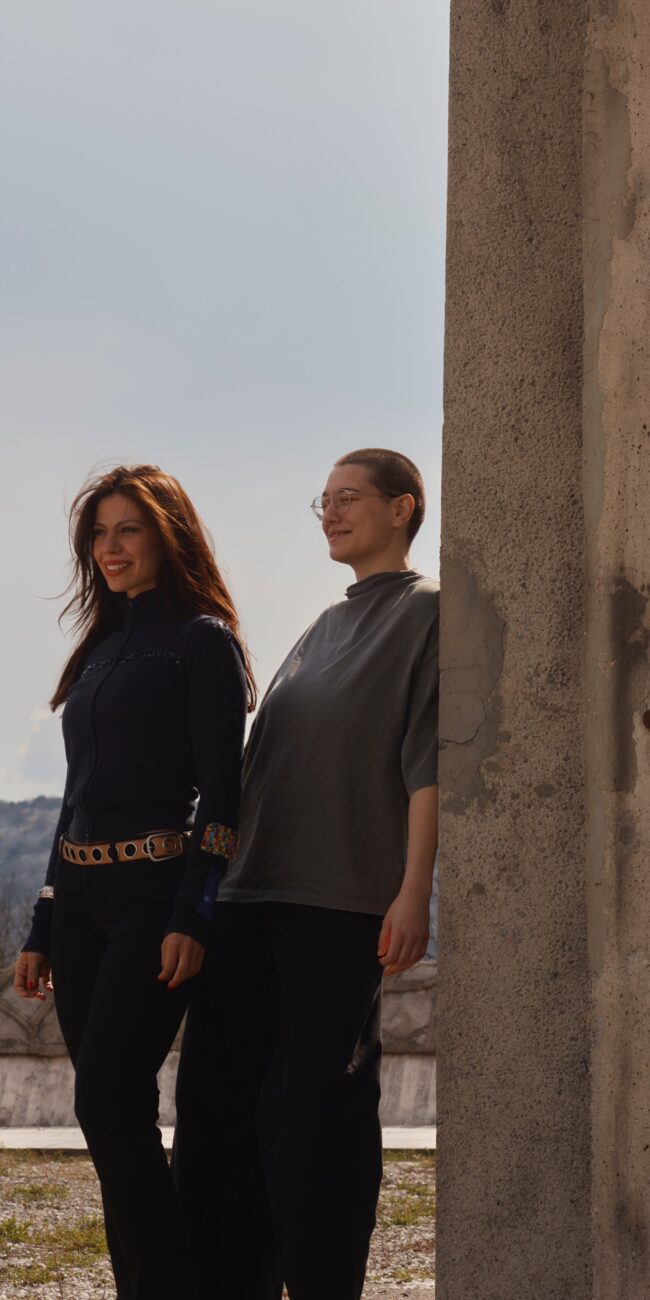
Zelenović & Bajagić | Photo: Geray Mena
You discuss the observer’s position and its ambiguity in confronting historical and contemporary evils. How does the exhibition engage with this theme, and what reactions do you anticipate from viewers?
We anticipate everything. Darja has experienced censorship in the past, as well as good criticism or even adoration. So no surprises I guess. International audiences that follow her work already feel hyped to come, the audience here in the Balkans is happy that two young women are national representatives. Biennale is a place where the whole art world comes, so we expect both positive and negative reactions. Sure it raises some political and social issues, but neither of us ever ran away from anything unpopular or controversial, especially Darja. To recognize the villain in yourself is nothing new, but to call people to reconsider our role in systematic and systemic deaths of people (in the past so as today) is not something we hope would go without accusations – first of moral relativism, probably, second for not taking the stand more explicitly or not conceptualizing topic more emotionally.
The raw canvases and steel structures used in the artworks carry significant meaning. Could you elaborate on how these material choices contribute to the narrative of the exhibition?
Rawness and directness are something Darja carries with her various artistic and personal experiences. American minimalism both in painting and sculpture has left a great trace in her education, which is seen in the work “Ambivalence of the Sacred”, the only “abstract” painting on the show. The materials, reference to their use, purpose (camouflage fabric or steel) together with treatment of the painting in every piece show this approach. In the case of the Mamula series, materials are in direct reference to military aesthetics, but also they talk about her approach to the topic – with no euphemisms. Heaviness and massiveness correspond to the topic, to its monumentality and elegy.
Your text references philosophers like Agamben and Baudrillard in discussing the complexity of evil. How does this philosophical backdrop shape the curatorial vision?
Not much to be honest. Darja already had her vision of the series when I suggested we should apply to an open call because it corresponds with the topic. I see my role more in explaining why this type of art is important for us here and today, and at the Biennale than in conceptualizing the exhibition. And of course by being included in the very process of the creation of works. But Darja is a researcher, she does her homework first. This is why for me it was a pleasure to curate and write for a catalog, she has the vision, she has the data, and I love to connect dots between what I think are important issues. Of course, philosophy is helpful when absurdity and evil overwhelm our visions of the future. My curatorial idea is to emphasize that art does the same. Help us understand ourselves and potentially calls us to communication and action with others and society.
Either fascism learned to tolerate differences to get power, or the art world doesn’t give a f*ck as long as it’s selling. We all accepted we are hypocrites.
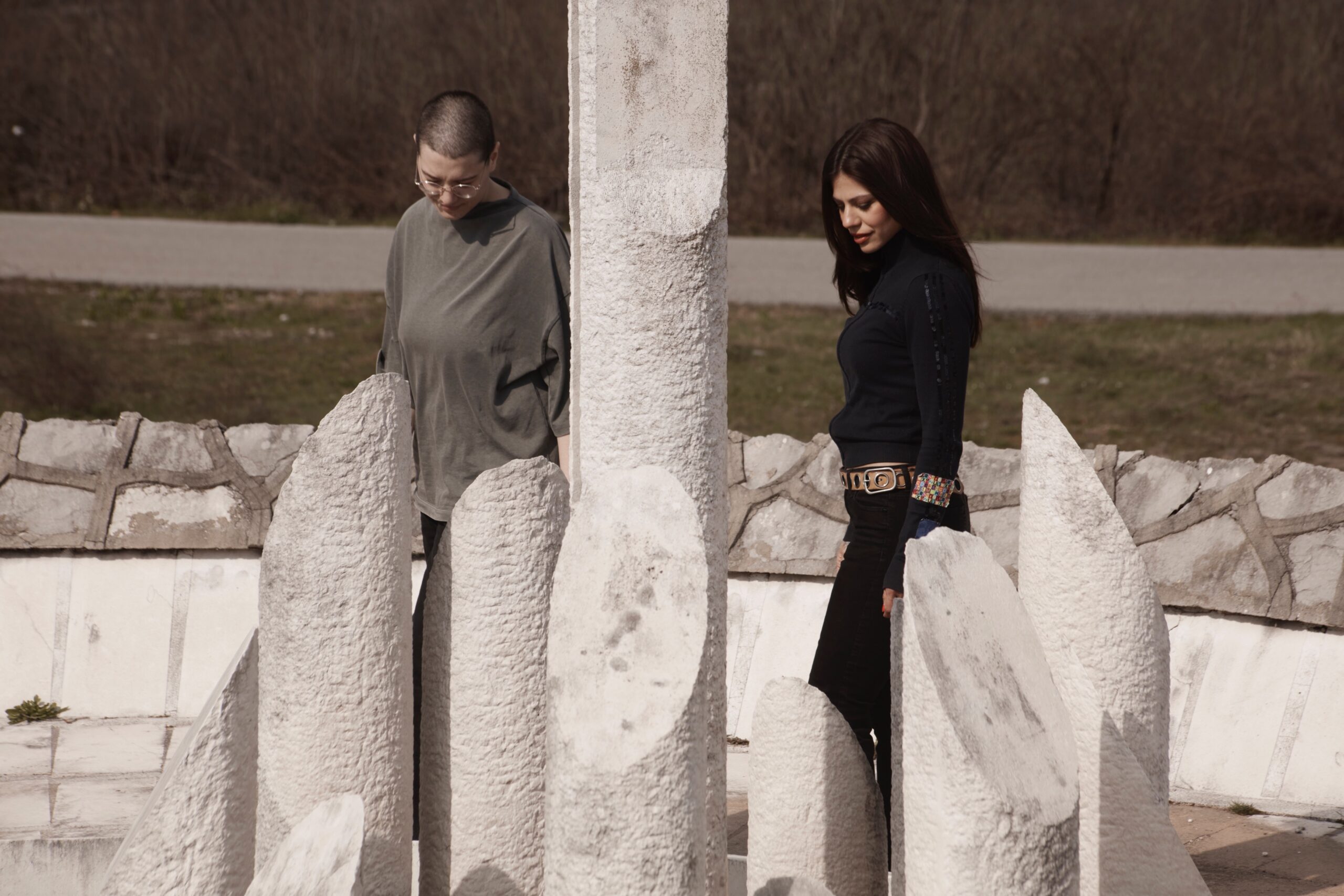
Zelenović & Bajagić | Photo: Geray Mena
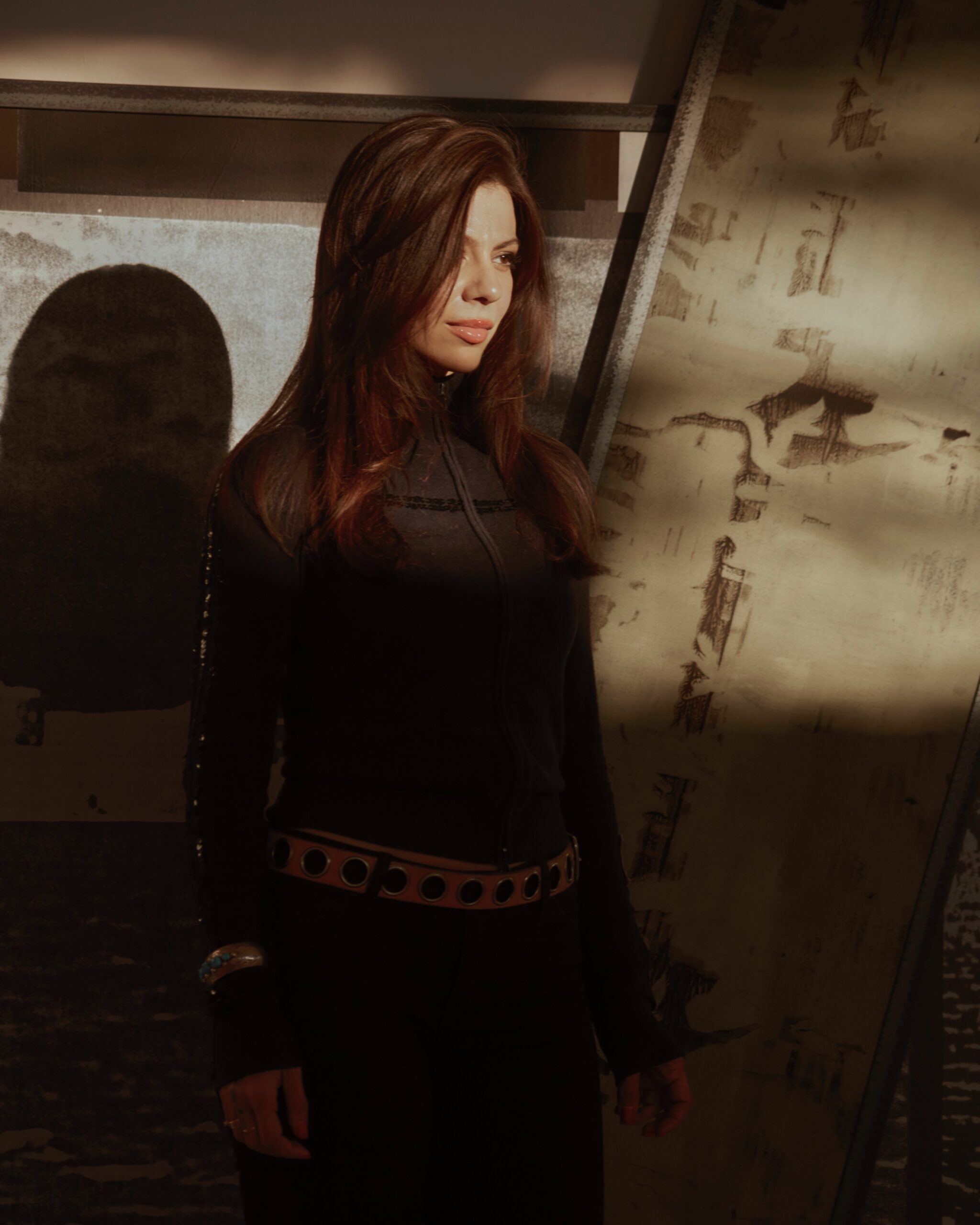
Darja Bajagić | Photo: Geray Mena
The transformation of Mamula Island from a concentration camp to a luxury hotel is central to the exhibition. What conversations do you hope this aspect will spark among viewers?
I assume that people from the Balkans already know this issue and that this won’t change much their perception, since our people have already shown criticism and resistance to this idea. But it might open some new perspectives to international audiences, and raise questions like how this becomes possible, and what is happening to politics if we allow this to happen. If it passes the National Assembly, who is responsible? How do our political decisions shape memory for future generations? Does history have a price, who is selling it, and who is profiting from its erasure? And how do we eventually learn to enjoy in commodification of narratives without feeling guilty?
Susan Sontag’s idea that there is no collective memory, only individual memory and collective instruction, is intriguing. How does this idea manifest in the exhibition?
My idea with the citation of Sontag in the text was to highlight the role of politics in the change of history and our perception of it. If memory is individual, then it is subjective and easily manipulated, and you are its only validator. The collective memory is different, to exist it has to be unified and coded, and we have to agree we remember the same way. Once we agree on collective remembrance it becomes the narrative. The narrative is used by politics and is passed on to us as a form of instruction and not a memory. Exhibition plays with ideas of memory since photographs used are vague, shown without info on who is represented, it leaves the meaning to the individual afront. Do you by accident (not remembering) empathize with a fascist? Do you feel proud looking at the camp commander, not recognizing his uniform? Are you feeling sorry for the right guys? By not learning history, not having a collective memory at all, or not calling the dominant narratives into question, we are doomed to the anxiety of not knowing what to do, or what side to take, and it poses the question – would we become better or worse people by forgetting?
Considering the dynamic nature of history and memory, how do you envision future interpretations of this exhibition’s themes?
Haha, never thought of it, interestingly. We probably live so much our own lives caring only for the history we will be alive to retell, that we don’t think about the next generations. It would probably be interesting to some I imagine art history student, but reading it would still function as an archeology of meaning, reading the layer of what it represented for the artist, for the past time and context, then, how it was reinterpreted in following readings, and in the end what it means today for the student analyzing it, society, art history. The beauty of her work lies in the duality of meaning so imagine how interesting it could be in the future if today she leaves us on seen.
Finally, how has working on ‘It Takes an Island to Feel This Good’ influenced your own views on art, history, and memory?
I am still reading about the concentration and death camps, and I am grateful to Darja for making me think about this topic, which I always felt was very important to me. Remembering and learning history is part of resistance, to narratives, to damnatio memoriae, and all other forms of current political oppression. I feel ashamed to not have learned many of these things before, and I feel ashamed for the history we all share and not learn, even though proud as well, but also sometimes I am afraid of its constant repetition. I rely on what Agamben warns us about. His definition of camp as “a sign of the system’s inability to function without being transformed into a lethal machine,” implies that the camp is embedded within order itself, functioning as a concealed matrix of politics in which we still live. It is this structure of the camp that we must learn to recognize in all its metamorphoses. Maybe then we can learn how to stop atrocities before they happen.
History is a product, a narrative, and a choice, but Bajajgić’s approach reminds us all of our role and our responsibility in it.

Ana Simona Zelenović | Photo: Geray Mena


